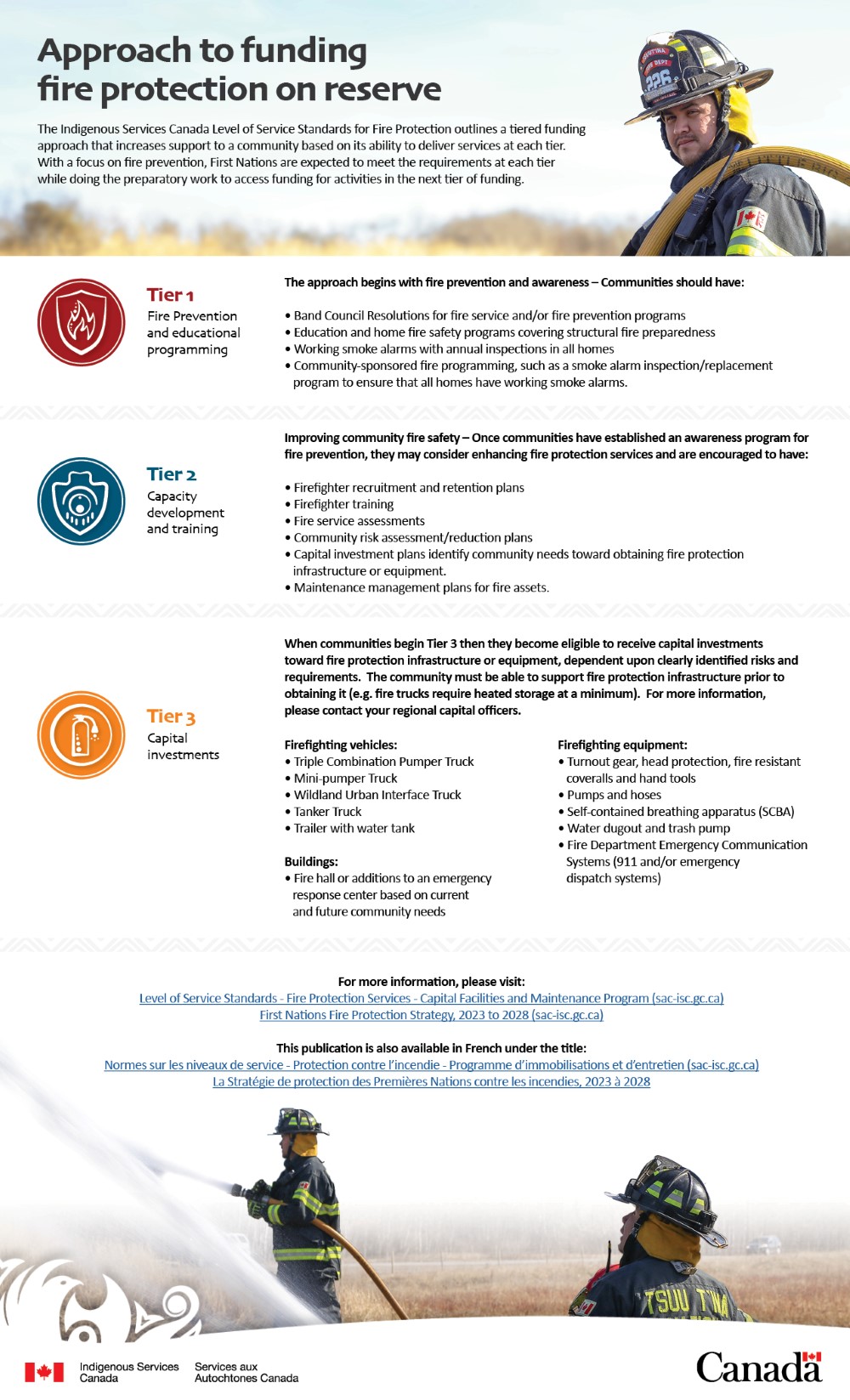Approach to funding fire protection on reserve
PDF Version (1.83 Mb, 1 page)

Long text description for the infographic
This is an infographic for the approach to funding fire protection on-reserve. The Indigenous Services Canada Level of Service Standards for Fire Protection outlines a tiered funding approach that increases support to a community based on its ability to deliver services at each tier. With a focus on fire prevention, First Nations are expected to meet the requirements at each tier while doing the preparatory work to access funding for activities in the next tier of funding.
Tier 1 – Fire Prevention and education programming
The approach begins with fire prevention and awareness – Communities should have:
- Band Council Resolutions for fire service and/or fire prevention programs
- Education and home fire safety programs covering structural fire preparedness
- Working smoke alarms with annual inspections in all homes
- Community-sponsored fire programming, such as a smoke alarm inspection/replacement program to ensure that all homes have working smoke alarms.
Tier 2 – Capacity development and training
Improving community fire safety – Once communities have established an awareness program for fire prevention, they may consider enhancing fire protection services and are encouraged to have:
- Firefighter recruitment and retention plans
- Firefighter training
- Fire service assessments
- Community risk assessment/reduction plans
- Capital investment plans identify community needs toward obtaining fire protection infrastructure or equipment
- Maintenance management plans for fire assets
Tier 3 – Capital investments
When communities begin Tier 3 then they become eligible to receive capital investments toward fire protection infrastructure or equipment, dependent upon clearly identified risks and requirements. The community must be able to support fire protection infrastructure prior to obtaining it (e.g. fire trucks require heated storage at a minimum). For more information, please contact your regional capital officers.
- Firefighting vehicles:
- Triple Combination Pumper Truck
- Mini-pumper Truck
- Wildland Urban Interface Truck
- Tanker Truck
- Trailer with water tank
- Firefighting equipment:
- Turnout gear, head protection, fire resistant coveralls and hand tools
- Pumps and hoses
- Self-contained breathing apparatus (SCBA)
- Water dugout and trash pump
- Fire Department Emergency Communication Systems (911 and/or emergency dispatch systems)
- Buildings:
- Fire hall or additions to an emergency response center based on current and future community needs